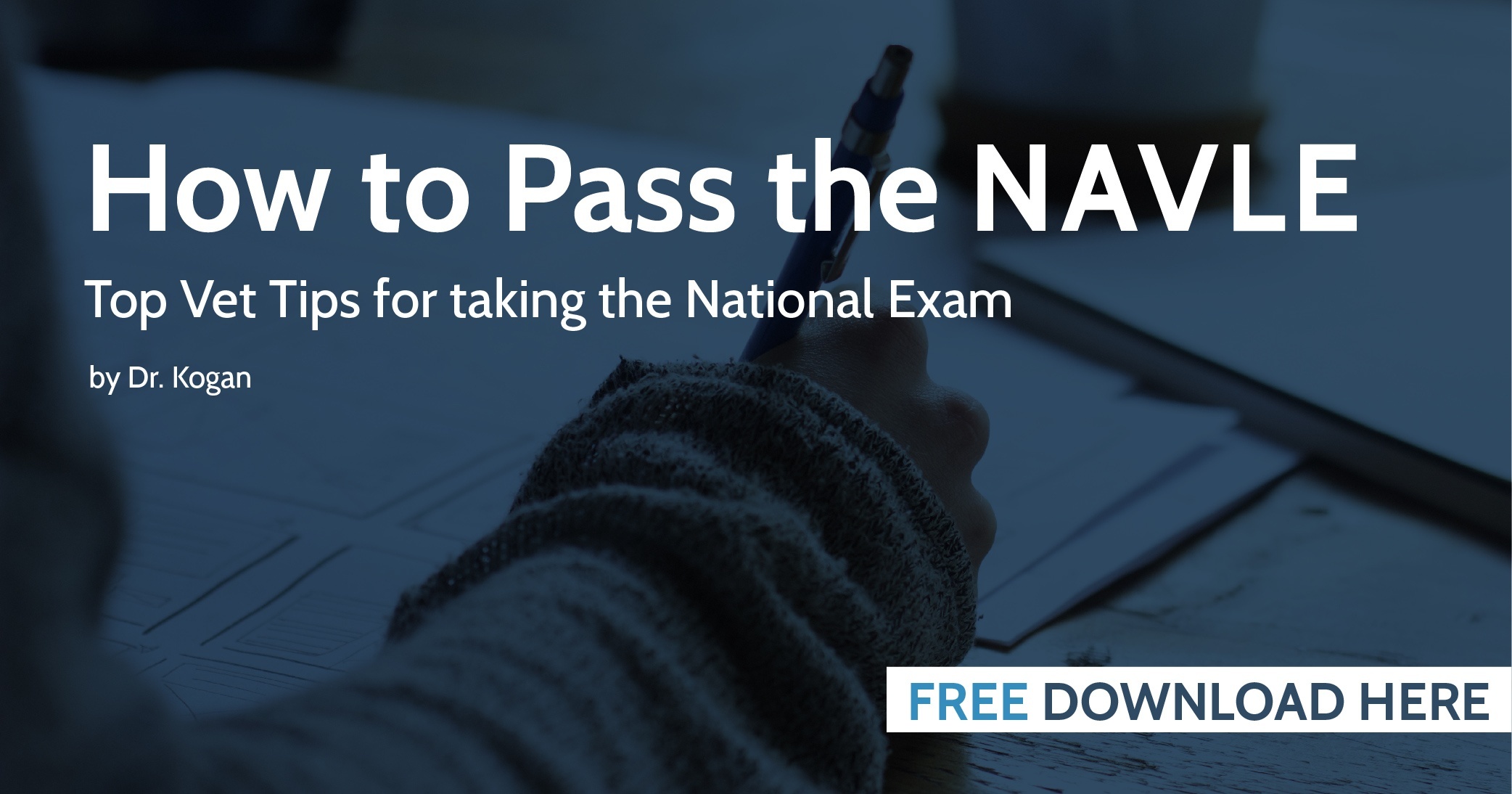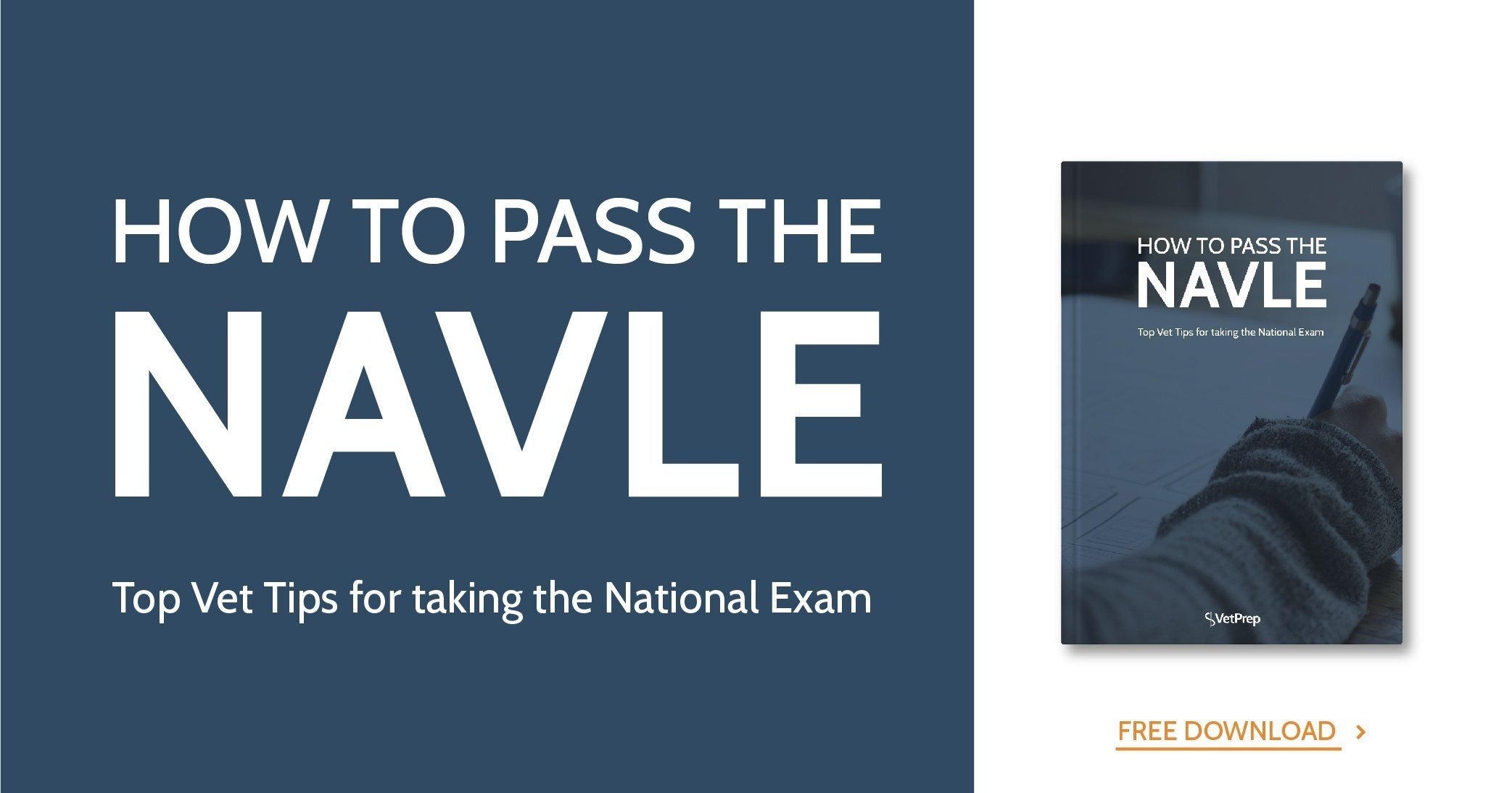
As a fourth year student, you’re probably busy working on clinics and studying for NAVLE®. But do you know what you need to know, prepare for or expect on your actual NAVLE test day?
We’ve summarized some of the key points that are either good reminders or good information to learn.
For more complete information about your NAVLE® test, check out the ICVA website and NAVLE® Bulletin.
1. Know what documents to bring with you
On your test day, you’ll need to bring both photo identification and your scheduling permit with you.
Below are some important details about these items:
- Photo identification
- This may include the following documents: “Passport, driver’s license with photograph, national identity card or other forms of dated, unexpired, government-issued identification with a photo.”(1)
- The key is that the name on your photo identification must match the name on your scheduling permit!
- Scheduling permit
- Can be printed or electronic
- You may be wondering why the scheduling permit is so important. The ICVA bulletin offers the following explanation, “You will receive the CIN in your Scheduling and Admission Permit. The CIN is required to access your examination at the Prometric center on the day you test. As Prometric does not have access to CINs, it is vital that you bring your Scheduling and Admission Permit with you on your scheduled test day; otherwise, you will not be admitted to take the test.”(1)
- You should record your confirmation number that you received when you schedule your testing appointment on the designated area on the bottom of your permit
2. Know that arriving early is not a recommendation, it is a requirement
While arriving early to important life events is a good rule of thumb, for NAVLE® testing, it is required to be at least 30 minutes early. The ICVA bulletin explains: “You should arrive at the test center 30 minutes prior to your scheduled test appointment. If you arrive after your appointment time, you may not be admitted. If you arrive more than 30 minutes after your scheduled testing appointment, you will not be admitted and must pay a fee to reschedule your test.”
To facilitate arriving early, Dr. Balay, author of an article called “Preparation for Success on the NAVLE®advises, “Know where you are going – maybe consider a trial run to the site to verify location and how long it takes to get there especially if travelling during peak/rush hour times. Is the parking adequate?”(2)
Arriving early allows for the check-in process, which has multiple steps such as :
“After you present the required identification, you will sign a test center log, be photographed, and store your personal belongings in your assigned locker. You may be scanned with a handheld metal detector and asked to empty and turn your pockets inside out before entering the testing room to confirm that you have no prohibited items.”(1)
3. Know what content you will be tested on
It’s important to have knowledge and information about the blueprint of the exam as well as species/diagnoses and competencies you will be tested on.
These can be found by following the links below:
- Follow this link for a breakdown of the blueprint by species.
- View a list of diagnoses and species.
- Here are the competencies you will be tested on.
4. Know about the exam format, timing, breaks and tutorial

Below are some fast facts about the exam:
- There are 360 total questions. Only 300 are scored; the other 60 are pretest questions that are unscored and are randomly distributed throughout each block - they will be unmarked so you don’t know which is which
- There are 6 blocks of 60 questions
- Each block is 65 minutes long
- There is a 15 minute optional tutorial in the beginning
- You get 45 minutes of break time
- There are nuances to the break rules for example, you must be on an authorized break screen to be allowed to leave the room. Make sure you read other important details about the breaks in the NAVLE® bulletin!
5. Know how important it is to avoid any irregular behavior
Displaying any irregular behavior during your exam has very serious consequences. “The ICVA defines irregular behavior as any behavior that threatens the integrity of the examination process. If while taking the NAVLE® examination a candidate shows irregular behavior or violates the test administration rules, that candidate’s potential for licensure could be jeopardized.
The ICVA reserves the right to cancel scores of any candidate who engages in irregular behavior, and also may bar that individual from one or more future administrations, or permanently. Such individuals may also be subject to possible civil or criminal prosecution.”(3)
6. It’s okay to feel like the exam did not go well..and it’s also okay to feel like it did
Every individual tests differently and every individual has a unique perception of their performance. Know that it’s okay to feel worried and have stress about your exam - it is not uncommon for people to feel this way! It’s also totally okay if you felt prepared and feel optimistic about the outcome.
7. Know that you will not get your scores right away
It takes about four weeks to get your scores. They are reported to the board through which you applied. In most cases, you will be notified via email when your scores are available online.
While we’ve summarized some of the key points here, there is so much more to know! Make sure you read the ICVA website and NAVLE Bulletin thoroughly before your exam day. Best of luck in your preparation for the NAVLE®!
References:
- 2019-2020 NAVLE Bulletin of Information for Candidates.
- Balay, Allen. Preparation for success on the NAVLE.
- NAVLE. ICVA.



